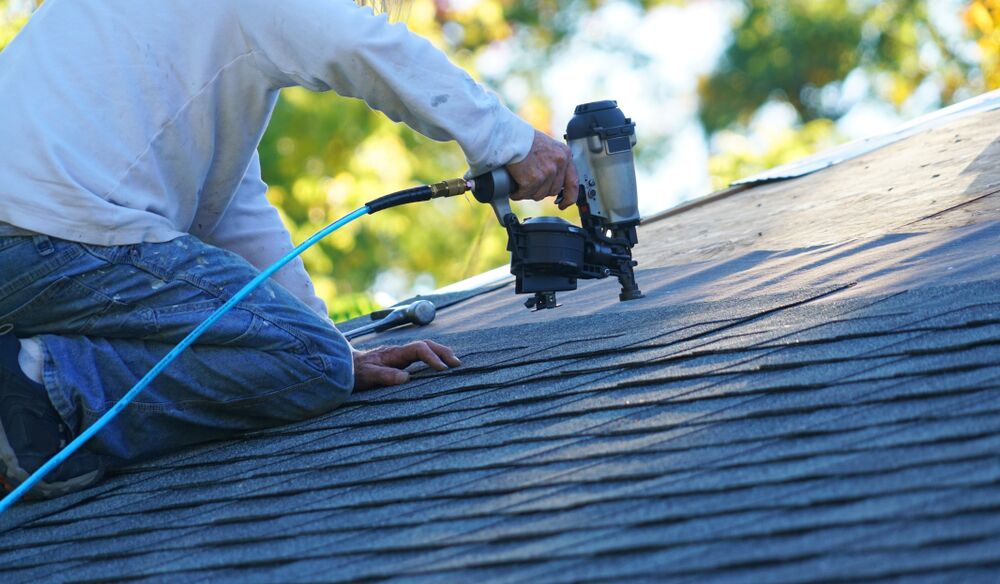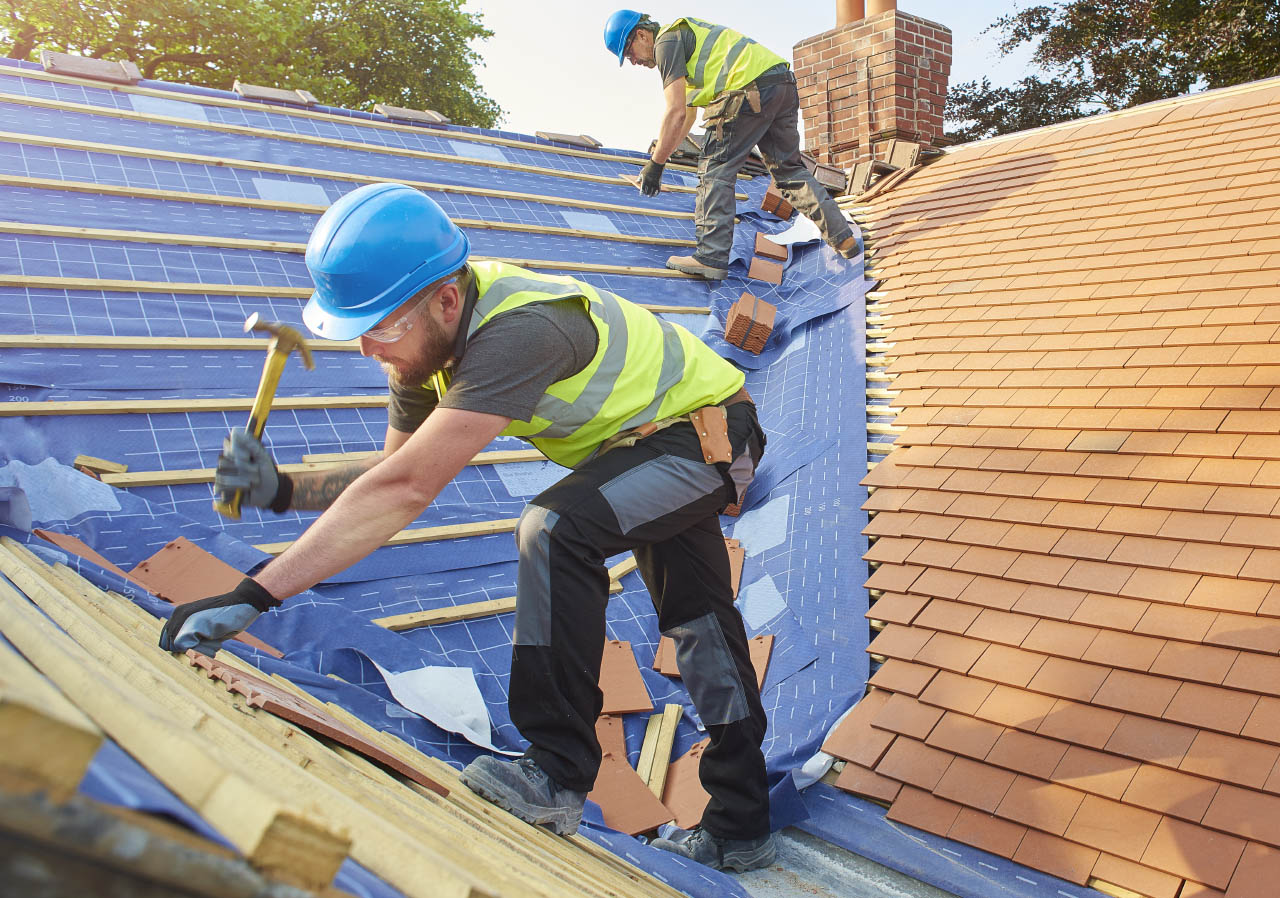Oahu Roofing: Trusted Roofing Solutions for Residences and Businesses
Oahu Roofing: Trusted Roofing Solutions for Residences and Businesses
Blog Article
Comprehending the Different Sorts Of Roof Coverings: A Comprehensive Guide for Homeowners
With an array of alternatives-- ranging from the conventional gable to the modern level-- each type presents one-of-a-kind benefits and challenges that should straighten with the house owner's ecological factors to consider and specific demands. As we check out the details of different roofing system kinds, it ends up being evident that one dimension does not fit all; the best selection may surprise you.
Gable Roofings
Gable roofs, identified by their triangular shape, are amongst the most preferred roof covering styles as a result of their simplicity and performance in dropping water and snow. This layout features 2 sloping sides that fulfill at a ridge, enabling efficient drainage and lessening the danger of water accumulation. The high pitch commonly connected with gable roofings enhances their capacity to take care of hefty precipitation, making them suitable for different climates.
In enhancement to their functional advantages, gable roofs use aesthetic flexibility. They can be adjusted to numerous building styles, from traditional to contemporary homes. The layout can likewise suit additional attributes such as dormer home windows, which improve natural light and ventilation in the attic room area.
Furthermore, saddleback roofs provide sufficient area for insulation, adding to energy efficiency. House owners can pick from a selection of roofing products, including asphalt shingles, metal, and tiles, even more boosting modification options.
Despite their advantages, saddleback roofs might call for additional support in areas prone to high winds or hefty snowfall. In general, the gable roof covering continues to be a favored choice as a result of its mix of functionality, longevity, and aesthetic allure.
Apartment Roofs
Flat roof coverings are frequently acknowledged for their minimalist design and functional applications, especially in industrial and commercial setups (oahu roofing). These roofs include a straight or almost horizontal surface, which allows for simple building and flexible space application. While they may lack the visual charm of angled roofs, flat roofings use various advantages, specifically in metropolitan environments where making best use of room is vital
One of the key benefits of level roofings is their availability. Homeowners can make use of the roofing system room for different purposes, such as roof gardens, balconies, or photovoltaic panel installments. Furthermore, level roofings are generally extra affordable to install and preserve contrasted to their sloped equivalents, as they need less materials and labor.
Common materials utilized for flat roofing systems include built-up roofing (BUR), customized bitumen, and single-ply membranes, each offering unique benefits. Overall, flat roofing systems serve as a useful and adaptable selection for several home owners and services alike.
Hip Roof Coverings
Hip roof coverings are identified by their sloped sides that merge on top, creating a ridge. This design is distinctive from saddleback roofs, as all 4 sides of a hip roof incline downwards toward the walls, offering a much more steady framework. The angle of the inclines can vary, enabling flexibility in architectural visual appeals and performance.
One of the primary benefits of hip roofings is their capability to stand up to heavy winds and unfavorable weather. The sloped surfaces enable better water drain, minimizing the danger of leaks you can check here and water damages. Additionally, hip roofs supply boosted attic room, which can be made use of for storage space and even exchanged livable locations.
Nevertheless, building a hip roof can be a lot more complex and pricey than simpler roof types, such as gable roofs. The added product and labor involved in developing the slopes and guaranteeing appropriate architectural stability can result in higher expenditures. In spite of these drawbacks, lots of home owners favor hip roofs for their toughness, aesthetic charm, and possibility for power efficiency.
Mansard Roofings
Mansard roofs, commonly identified by their special four-sided design, function 2 slopes on each side, with the lower incline being steeper than the upper. This architectural style, originating from France in the 17th century, is not just cosmetically enticing but practical, as it takes full advantage of find more info the useful space in the top floorings of a structure. The high reduced slope enables even more headroom, making it a suitable selection for lofts or attics, which can be exchanged living areas.
Mansard roof coverings are identified by their flexibility, suiting numerous building designs, from traditional to modern. They can be constructed with various products, consisting of asphalt shingles, slate, or metal, supplying home owners with a series of alternatives to match their choices and budget plans. Furthermore, the design enables the integration of dormer windows, enhancing all-natural light and air flow in the upper levels.
Nevertheless, it is necessary to think about the prospective disadvantages. Mansard roofings may call for even more maintenance because of the intricacy of their style, and their steep slopes can be testing for snow and rainfall overflow. On the whole, mansard roof coverings incorporate sophistication with functionality, making them a prominent choice among home owners looking for unique why not check here building functions.
Dropped Roofing Systems
As property owners significantly look for simpleness and capability in their architectural designs, lost roofings have arised as a prominent choice. Identified by a single sloping aircraft, a shed roofing system provides a minimal aesthetic that complements different home styles, from contemporary to rustic.
Among the primary advantages of a shed roof is its uncomplicated building, which commonly translates to decrease labor and product costs. This layout enables efficient water drainage, decreasing the danger of leaks and water damages. Additionally, the vertical incline gives enough area for skylights, improving natural light within the interior.
Lost roof coverings additionally use convenience in regards to use. They can be efficiently incorporated into additions, garages, or exterior frameworks like sheds and pavilions. In addition, this roof design can suit different roofing materials, consisting of steel, asphalt tiles, and even environment-friendly roofings, straightening with environmentally friendly efforts.
Nonetheless, it is vital to consider regional environment problems, as hefty snow lots might necessitate adjustments to the roof's angle or structure. Overall, lost roofs present a practical and aesthetically pleasing alternative for home owners seeking to maximize functionality without compromising design.
Verdict


Gable roofing systems, identified by their triangular shape, are amongst the most popular roof designs due to their simplicity and efficiency in dropping water and snow. oahu roofing. The steep pitch commonly connected with gable roof coverings enhances their capability to deal with heavy precipitation, making them appropriate for numerous environments
While they might lack the visual allure of pitched roofing systems, level roof coverings provide countless advantages, especially in metropolitan settings where making the most of area is crucial.

Report this page